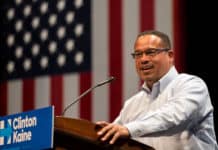Today the Star Tribune reports that almost 25% of Minnesota School districts working to cut the education achievement gap are failing. To clarify, hundreds of Minnesota School districts are not on track to meet their goals, including the state’s largest districts: Minneapolis and St. Paul public schools. If a school does not meet it’s goal its funding could be cut. The education achievement gap refers to the gap between the academic achievements of white and minority students, as well as low-income and affluent students. The state currently has a goal to cut the achievement gaps in half by 2017.
The State of Minnesota does not have a poor public education system; in fact, many statistics indicate that it is doing quite well. For example, the State of Minnesota boasted the highest ACT scores for graduating seniors of any state. However, it is statistics like this that render citizens of Minnesota to have an incomplete picture of the state’s public education system. The state’s most vulnerable students are slipping through the cracks.
MPR reports that Minnesota lags behind the rest of the country in on-time graduation rates of students of color. Only 49% of Native American students and 61% of African American and Latino students graduate high school on time. These rates are abysmal when compared to the 85% of white students that graduate high school on time. A CBS report displays that in 2013 only 16% of African American high school graduates were college ready, compared to 61% of their white counterparts.
Education serves as the lifeblood to the Minnesota economy. Today’s students will be responsible for Minnesota’s economic vitality in the years to come. If white students are performing far better than their minority counterparts it is not just the minority groups that suffer, it is the entirety of Minnesota. A well educated citizenry could foster a stronger economy and a stronger Minnesota.
But what is being done to combat the achievement gap? Following Secretary Duncan’s speech, the state received a No Child Left Behind waiver in 2012 which granted them the flexibility to work to reach their goal to cut achievement gaps in half by 2017. Education Weekly reports the state is focusing on at-risk subgroups of students by utilizing targeted interventions, increased accountability measures, and an increased focus on data.
Governor Dayton is currently pushing a 7-Point Plan he believes will help close the achievement gap and improve Minnesota schools. The plan includes more funding of Pre-K education, better early childhood education, a raising of standards, having all students reading well by 3rd grade, improving quality of education, better testing, and improving the quality of the Minnesota Department of Education.
Republican leaders in state and local government have a different view of how to improve the education system. Hennepin County Commissioner and former gubernatorial candidate Jeff Johnson told Alpha News that school choice and local authority are the best ways to decrease the size of the achievement gap. Johnson says Minnesota must, “Provide all families with the means to make meaningful choices about where their kids attend schools by funding students rather than districts,” adding, “Push authority down to local schools and enable school administrators and teachers to make significant decisions that matter to parents and students about curriculum, staffing and budgets.”
Republican State Senator Bruce Anderson (District 29) echoes Johnson’s sentiment, stating, “We should make it as easy as possible for parents to send their children to the best schools,” and also criticizing the current strategy by asserting, “We can’t continue to simply spend more money and expect different results.” Anderson believes that the state should study and learn from charter schools that have had success in reducing the achievement gap, including Hiawatha Academy and Harvest Preparatory.
The debate pertaining how to effectively address the state’s education achievement gap will rage on long after information pertaining to whether the state reached its goal to narrow the achievement gap in 2017. With every seat in the legislature up for grabs in November, one can be sure that education reform will remain in the political discourse. To stay up to date on all things education in Minnesota, subscribe to Alpha News.












